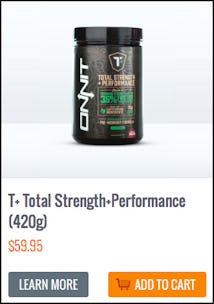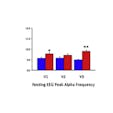Bioenergetics is a field in biochemistry that concerns energy flow through living systems.
 We have classified these systems as:
We have classified these systems as:
- Alactic System: Stored ATP and creatine phosphate as fuel
- Anaerobic System: Requires no oxygen; Glycogen as fuel
- Aerobic System: Presence of oxygen; uses stored fat, glycogen, and protein
To use in the real world, we have attached both a power and capacity to each system:
- Alactic Power & Capacity
- Anaerobic Power & Capacity
- Aerobic Power & Capacity
This makes it easy for coaches when it comes to programming and let’s be honest – we love easy and clearly defined principles, not messy. But, I see athletes that are anything but clearly defined and have a range of abilities that vary between each — leaving us coaches searching for the right mix.
Emphasis on right mix is key, because nothing is trained in isolation. We need to think of training as having an affect on everything: psychology; energetics; muscular, neuromuscular, immune, endocrine, sensory, vascular, fascial systems, etc. This is all categorized under the bio-psycho-social model. If that’s not complicated enough, it doesn’t get better once we zero in on bioenergetics alone.
So let’s get messy¦
- Since we have attached “power” to each system, how does the power of a particular system improve?
- Playing devil’s advocate — what if anaerobic power training doesn’t improve the power of the anaerobic system?
You might call bullshit, but physiologically speaking how can we draw a line between training geared solely for capacity or solely for power?
For this example to increase power, we need to speed up the time it takes for a reaction to occur within the anaerobic system. This is done by increasing the capacity of substrates and enzymes.
When we look at middle distance or events with similar duration, glycogen (the substrate for the anaerobic system) will not be pushed to depletion. Therefore the training goal should be to improve capacity (in this case, enzyme concentration) that will increase power or speed of reaction.
The messy part is that both anaerobic capacity and anaerobic power work could potentially increase enzyme concentration. In athletes with low anaerobic capacity (slow twitch), it’s possible anaerobic power training could fulfill this adaptation.
On the flip side, for athletes with a high anaerobic capacity (fast twitch), anaerobic power training might not move the dial at all when it comes to improving capacity.
This is just one more reason why gathering data on individual athletes is important. So when we guess, it’s at least educated. We also must remember that even though we prescribe traditional anaerobic power or anaerobic capacity workouts.
The other systems are being trained as well. For example, at Adams State, a staple workout for our 800m group was 4 sets of 5x200m@27 secs w/ a 55 sec 200m jog recovery.
This would be considered a traditional anaerobic capacity workout. Yet you can’t deny this type of work also has a high demand on the aerobic system considering we would travel the mile mark around a 5:30 pace — very close to our LT pace.
This is why in my heart of hearts I am not completely sold on protocols that are laser focused on improving a specific adaptation (Mitochondria or Capillarization). At times it may lack specificity.
Sorry?
I respect it and may incorporate it in situations that make sense, but it’s not my bread and butter. For me it’s about finding the right mix that is complementary to the individual.
To say I am going to focus solely on the Aerobic value on the Omegawave might take me far away from the essence of the athlete. Though I don’t want it to lessen either. I know you what you may think.
“Didn’t this dude just write about Simple and Seluyanov’s work?” Yea, but I am mess too.
Closing Thoughts
- Most periodization schemes use a traditional approach: Capacity —> Power (though you could run a mix)
Aerobic Power + Anaerobic Capacity —-> Aerobic Power + Anaerobic Power
Anaerobic Power + Aerobic Capacity —–> Anaerobic Capacity + Aerobic Power
Realize that training one may affect the other. There is always a push and pull relationship between Aerobic and Anaerobic qualities (Athlete specific).
- HIIT can usually be categorized as either Aerobic Power, Anaerobic Power, and Anaerobic Capacity Training.
- If you decide to increase your frequency of Anaerobic Power Training — procede with caution. Very few coaches or athletes who mix power work with intense strength training get it right. (endocrine system)
- Nutrition can either amplify or hinder adaptation.
- The athlete is your system, marriage to anything outside of that will no doubt be a headache.
References:
- Olbrecht, Jan (2013). The Science of Winning. F&G Partners.
- Magness, Steve (2014). The Science of Running: How to find your limit and train to maximize your performance. Origin Press.
- Bosch, Frans and Ronald Klomp (2005). Running: Biomechanics and Exercise Physiology Applied in Practice. Churchill Livingstone.


)





